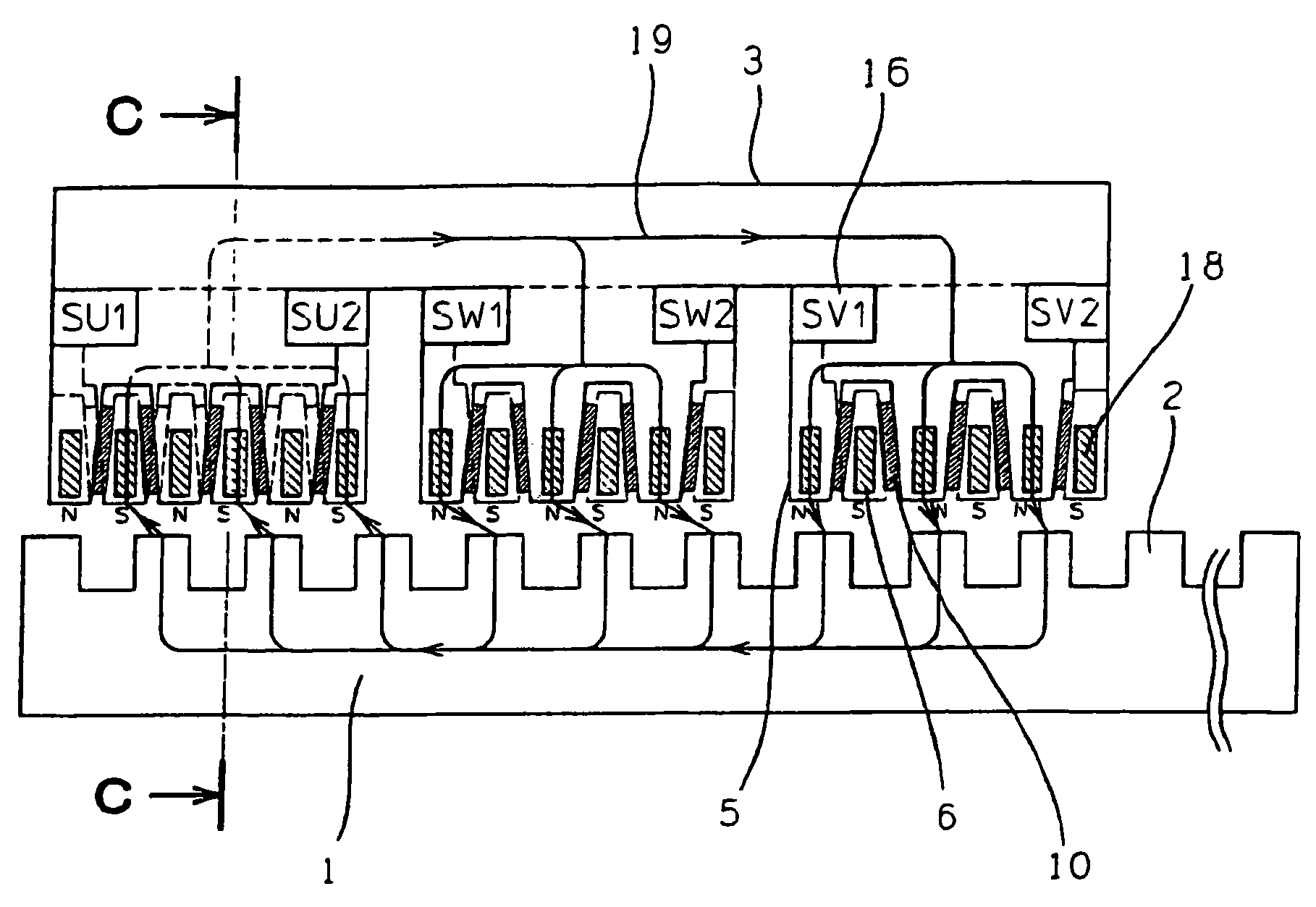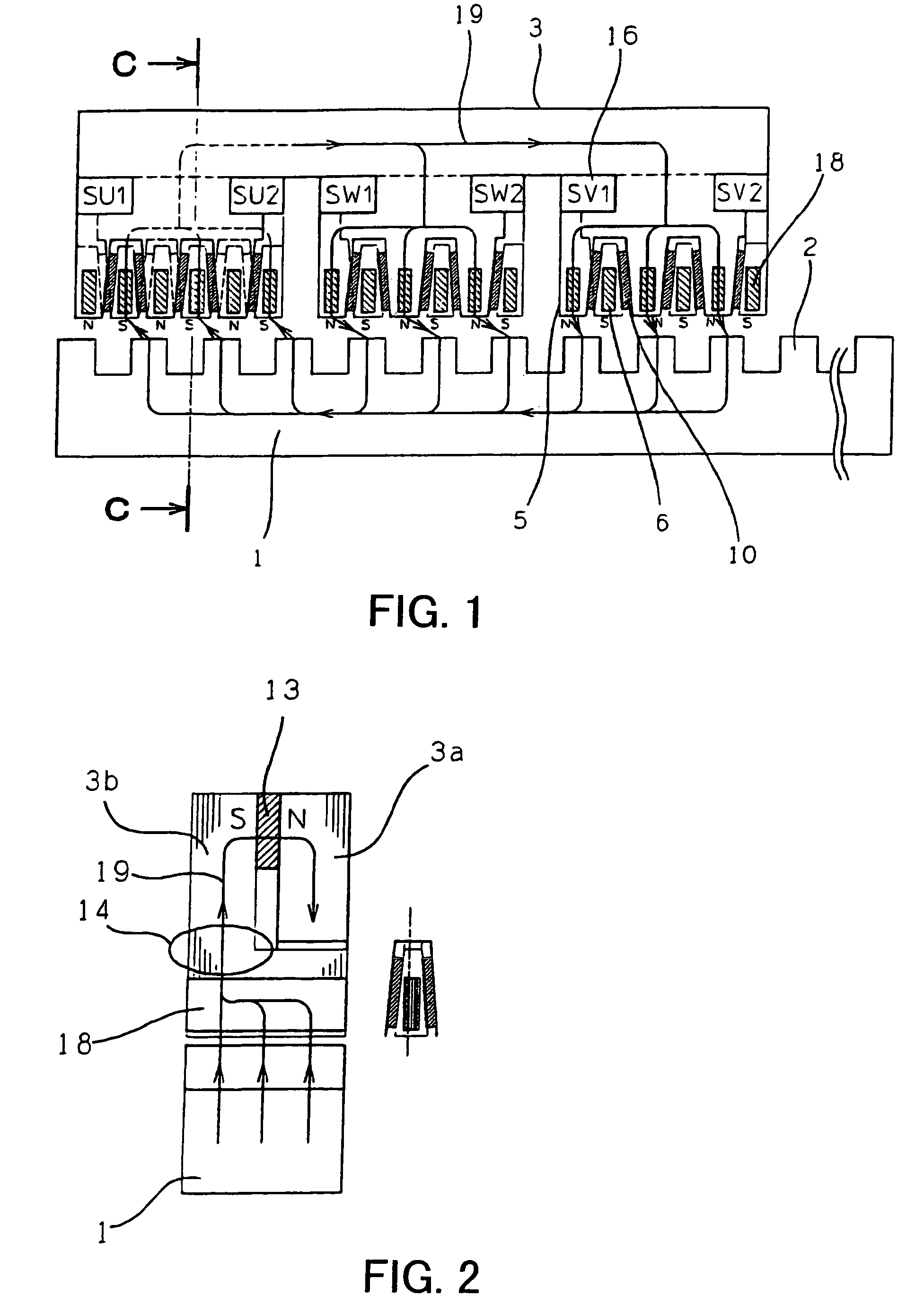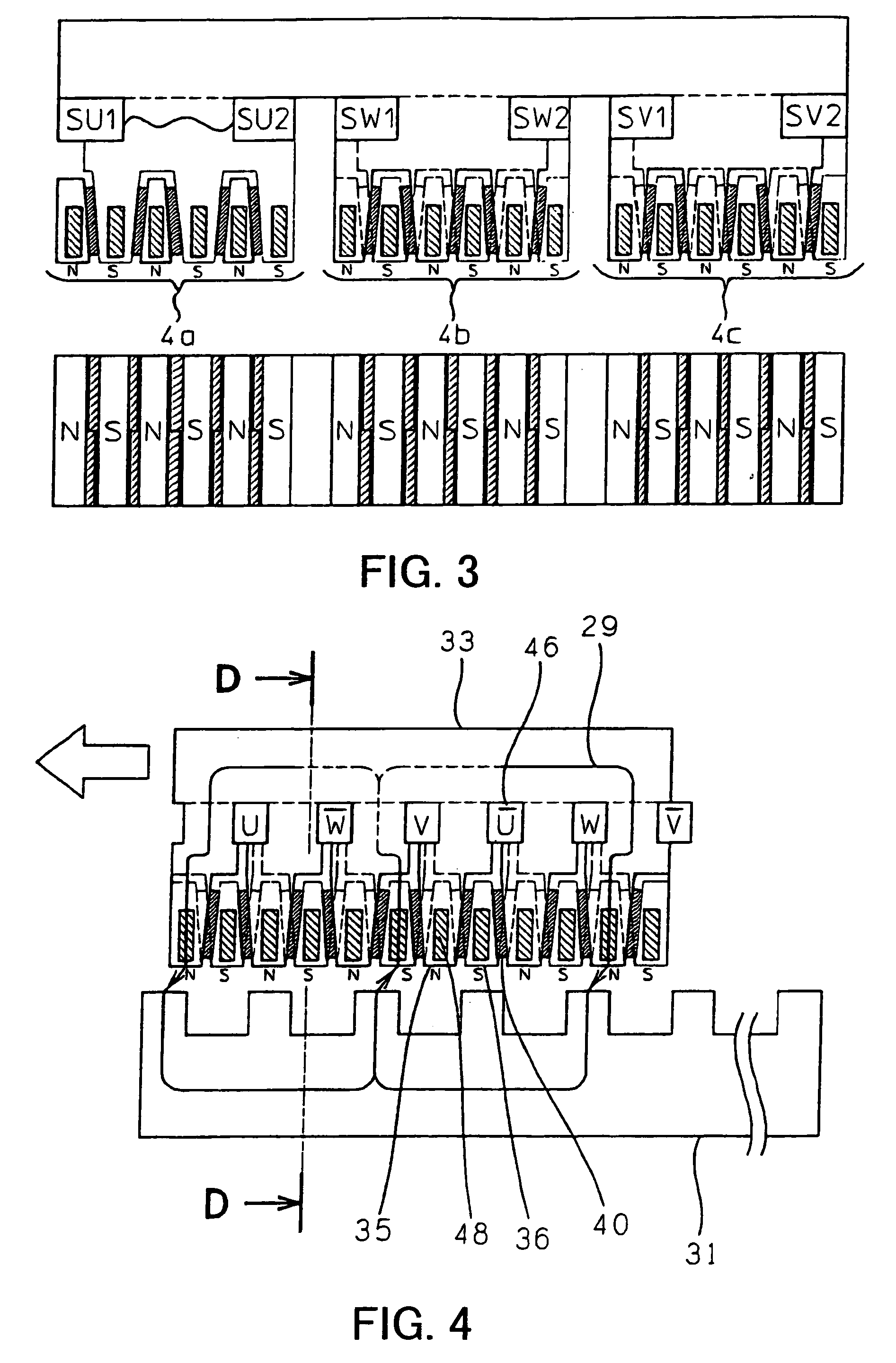Motor using permanent magnet
a permanent magnet and motor technology, applied in the field of motors, can solve the problems of reduced motor thrust, inability to achieve high-speed driving, and ineffective utilization of the magnetic flux of each permanent magnet b>64/b>, so as to reduce the heat generated in the motor, reduce the magnetic flux, and improve the output thrust
- Summary
- Abstract
- Description
- Claims
- Application Information
AI Technical Summary
Benefits of technology
Problems solved by technology
Method used
Image
Examples
first preferred embodiment
[0049]FIGS. 1, 2, and 3 show a permanent magnet linear motor according to a first preferred embodiment of the present invention. FIG. 2 is a diagram showing a C—C cross section of FIG. 1, and FIG. 3 is a side view and a bottom view of a mover 3 of FIG. 1. The first preferred embodiment will now be described referring to FIGS. 1, 2, and 3.
[0050]In FIGS. 1, 2, and 3, reference numeral 3 represents a mover, reference numeral 3a represents an N pole magnetic yoke, and reference numeral 3b represents an S pole magnetic yoke. The N pole magnetic yoke 3a and the S pole magnetic yoke 3b are formed by layering electromagnetic steel plates. Reference numeral 16 represents a three-phase AC winding, symbols SU1 and SU2 represent U-phase windings, symbols SV1 and SV2 represents V-phase windings, and symbols SW1 and SW2 represent W-phase windings. Reference numeral 5 represents an N magnetic pole, reference numeral 6 represents an S magnetic pole, and reference numeral 10 represents an auxiliary ...
second preferred embodiment
[0055]FIGS. 4, 5, and 6 show a linear motor according to a second preferred embodiment of the present invention. FIG. 5 is a diagram showing a D—D cross section in FIG. 4 and FIG. 6 is a side and bottom views of a mover 33. Similar as in the first preferred embodiment, in this motor, a three-dimensional magnetic path is generated between the mover 33 and the stator 31, but the linear motor of the second preferred embodiment has a different configuration from the linear motor of the first embodiment. The second preferred embodiment will now be described referring to FIGS. 4, 5, and 6.
[0056]In FIGS. 4, 5, and 6, reference numeral 33 represents a mover, reference numeral 33a represents an N pole magnetic yoke, and reference numeral 33b represents an S pole magnetic yoke. The N pole magnetic yoke 33a and the S pole magnetic yoke 33b are formed by layering electromagnetic steel plates. Reference numeral 46 represents a three-phase AC winding and symbols indicating U-phase, V-phase, and W...
PUM
 Login to View More
Login to View More Abstract
Description
Claims
Application Information
 Login to View More
Login to View More - R&D
- Intellectual Property
- Life Sciences
- Materials
- Tech Scout
- Unparalleled Data Quality
- Higher Quality Content
- 60% Fewer Hallucinations
Browse by: Latest US Patents, China's latest patents, Technical Efficacy Thesaurus, Application Domain, Technology Topic, Popular Technical Reports.
© 2025 PatSnap. All rights reserved.Legal|Privacy policy|Modern Slavery Act Transparency Statement|Sitemap|About US| Contact US: help@patsnap.com



